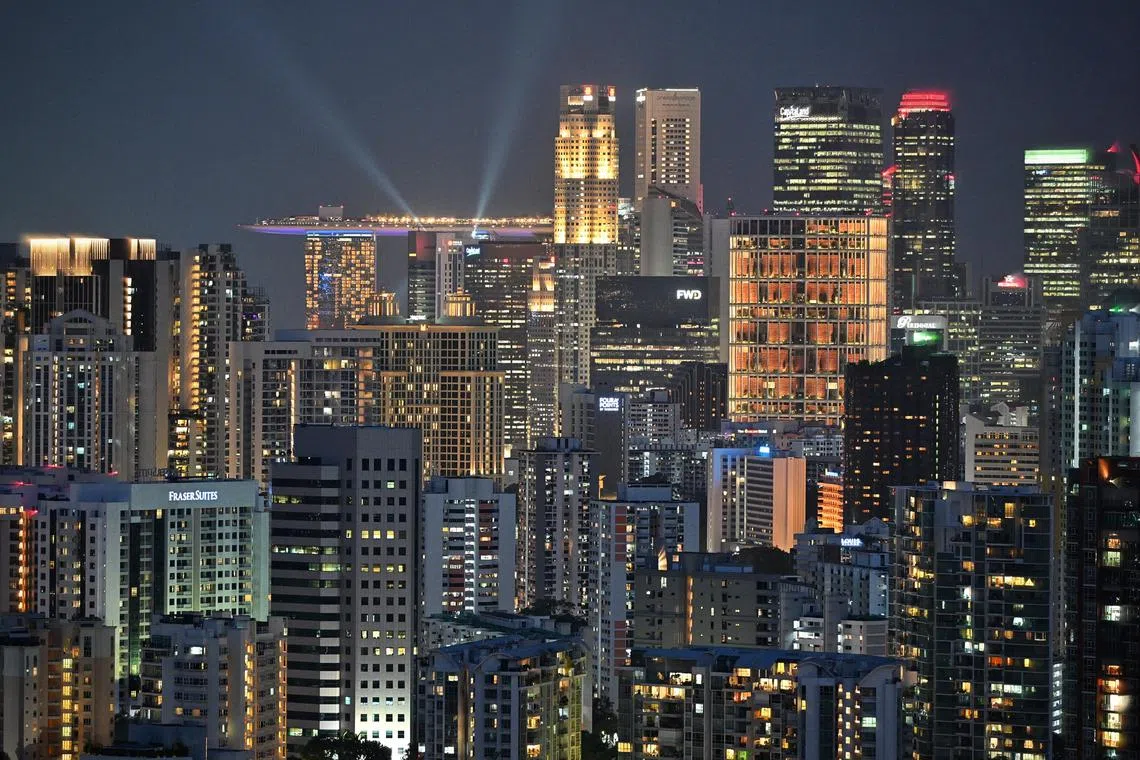Household electricity bills set to rise as carbon taxes to increase in 2024
Sign up now: Get ST's newsletters delivered to your inbox

On average, the higher carbon tax could lead to an increase of $4 in monthly household utility bills for a four-room Housing Board flat.
ST PHOTO: CHONG JUN LIANG
Follow topic:
SINGAPORE – Electricity prices for households are poised to rise in 2024 as power generation companies will face a higher tax for their carbon emissions.
On average, the higher carbon tax could lead to an increase of $4 in monthly household utility bills for a four-room Housing Board flat, according to a forecast from the National Climate Change Secretariat (NCCS). This is assuming the full cost of the carbon tax is passed on to consumers.
Electricity retailers have not yet disclosed details of the price changes.
In 2024, Singapore’s carbon tax will rise to $25 per tonne of emissions, up from $5 per tonne now.
Introduced in 2019, the carbon tax was set at $5 per tonne for five years till 2023 to provide a transition period for facilities that directly emit at least 25,000 tonnes of emissions annually.
NCCS calculated that every increase of $5 in carbon tax could cause household electricity tariffs to rise by a corresponding 1 per cent. This means electricity bills could go up by about 4 per cent in 2024.
Households here can either choose a price plan from an electricity retailer or buy power from SP Group at the regulated tariff set by the Energy Market Authority.
Electricity retailers that spoke to The Straits Times were tight-lipped about the exact rate increase of electricity prices.
Leading electricity retailer Geneco, which has a market share of nearly 27 per cent, said: “Tariffs will be adjusted according to any development to carbon tax.”
Senoko Energy said: “While the carbon tax component is likely to make an impact on electricity prices, it could also encourage businesses and households to re-evaluate their electricity consumption in efforts to lower their energy usage and wastage.”
Apart from carbon tax, other significant costs that determine the pricing of electricity plans include the prevailing fuel price, said PacificLight.
The power-generation company and electricity retailer is developing a project on Pulau Bulan in Indonesia to import electricity from solar power.
It has also spent more than $30 million to improve efficiencies at its Jurong Island plant, including upgrading its turbine, which would reduce an overall 40,000 tonnes of emissions annually when the improvements are completed in 2024.
Increasing the energy efficiency of power plants is one strategy to reduce the impact of carbon tax on retailers that are also generation companies.
Tuas Power’s chief operating officer Michael Wong told ST that its power station is being upgraded to improve efficiency, to reduce the gas used and amount of emissions per megawatt hour of energy generated.
Tuas Power is also moving towards using lower carbon-emission sources of energy such as solar and biomass to generate electricity, added Mr Wong.
Sembcorp Power did not respond to ST’s queries, while Keppel Electric declined to comment.
Apart from power stations, the water sector will also be impacted by the higher carbon tax from 2024.
Water in Singapore requires electricity to produce. For instance, desalination, one of the processes involved in providing the Republic’s water supply, requires energy to remove salt from seawater.
From January 2024 to December 2025, eligible Singaporean HDB households will receive an additional $20 per quarter in U-Save rebates – $80 a year in total – to cushion the impact of the increases in carbon tax and water price in 2024 and 2025.
On average, the additional U-Save rebates should fully offset the increase in utility bills for one- to two-room flats over the next two years, by about 80 per cent for three- to four-room flats, and by about 65 per cent for larger flats.
As part of its international commitment to tackling climate change, Singapore has a target of reducing greenhouse gas emissions to about 60 million tonnes in 2030
Singapore’s emissions are expected to peak at around 65 million tonnes between 2025 and 2028,
The latest figures show that Singapore’s greenhouse gas emissions in 2021 reached the highest levels yet at 57.7 million tonnes
One strategy to meet the net-zero target is raising the carbon tax.
According to the Ministry of Sustainability and the Environment, carbon tax provides a broad-based price signal across the economy to encourage companies to reduce their emissions and, at the same time, gives them the flexibility to act where it makes the most economic sense.
Dr David Broadstock, a senior research fellow and lead of energy transition at the National University of Singapore’s Sustainable and Green Finance Institute, said: “We are beginning to see prices which will be noticeable – which is important, since the carbon tax is necessary to achieve a timely energy transition, and reach our net-zero aspirations.
“It also is a timely juncture to think about how impactful high carbon prices will be. With a future price of $50 to $80 (per tonne of emissions) by 2030, Singaporeans will feel the effect more strongly still.”

